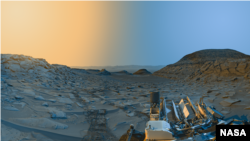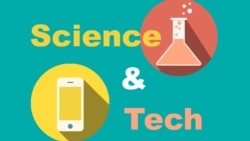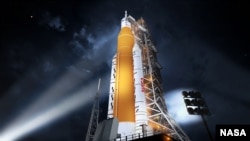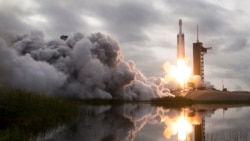A private company is working with the American space agency NASA to develop a new rocket that could greatly reduce space travel times.
The engine for such a rocket will be designed to sharply increase the amount of thrust to speed up space travel and improve rocket efficiency.
Thrust is the force that pushes a spacecraft through the air. It is produced by a propulsion system. Generally, a gas or liquid fuel is burned to produce thrust from the back of a spacecraft to propel it forward at high-speed.
The new design, called Pulsed Plasma Rocket (PPR), is being developed by Arizona-based company Howe Industries. The company is currently in the early stages of studying the technology before building working engine models.
In a recent statement, Howe Industries said such rocket technology will be needed to support NASA’s plans to return humans to the moon and after that, possibly Mars. The space agency has also set a goal to build a long-term base in space. But one barrier to all these plans is the long travel times necessary with current spacecraft systems.
NASA estimates the moon sits an average of about 382,500 kilometers from Earth. The exact distance changes because of the moon’s orbit around Earth. The average distance from Earth to Mars is 225 million kilometers.
NASA says a trip to Mars with existing spacecraft would take at least 200 days each way. Developers of the proposed Pulsed Plasma Rocket have said it could reduce travel time to the Red Planet to about two months each way.
Howe Industries said its new design gives the rocket the ability to reach extremely high speeds to complete “reasonable” space travel times. The development team estimates its PPR system could produce up to 100,000 N of thrust. The ‘N’ at the end of the number stands for Newtons, a unit of measurement for thrust.
NASA has described its Space Launch System (SLS) as the most powerful ever built. The agency has said the SLS rocket system is expected to provide nearly 53 million N of thrust during space travel.
Developers of PPR say that in addition to a huge increase in thrust, the new design also provides a “specific impulse” rate of 5,000. Specific impulse is a method for measuring – in seconds –thrust and efficiency levels of rocket engines. The higher this rate is, the more efficient the rocket system is. By comparison, the SLS rocket has specific impulse rates below 500.
Officials at Howe have said the PPR is based on another plasma-based technology known as pulsed fission fusion. NASA says this process involves quickly pressing plasmas into high pressures to produce thrust. But the developers say the PPR system is smaller, simpler and costs less to operate.
Howe’s statement introducing the technology said the combination of extremely high thrust and higher specific impulse rate “holds the potential to revolutionize space exploration.”
The team said such a system should be able to propel much heavier spacecraft and support much longer trips to more distant areas of space. The planned system could also make it easier for spacecraft to be equipped with heavy shields to protect traveling astronauts from Galactic Cosmic Rays. These are highly energetic particles that move through space at nearly the speed of light. The rays can be harmful to humans in large amounts.
The PPR project is one in a series of NASA development projects that recently received additional financial assistance to keep running. The projects are part of a NASA program called Innovative Advanced Concepts (NIAC).
PPR is currently in Phase I of development. The team said if chosen by NASA to continue with Phase II, it will be centered on improving the performance of the proposed engine, as well as carrying out experiments on major engine systems. The last phase will involve completing a spaceship design for carrying humans to Mars.
I’m Bryan Lynn
Bryan Lynn wrote this story for VOA Learning English, based on reports from NASA and Howe Industries.
___________________________________
Words in This Story
efficient – adj. working well and not wasting time or energy
propulsion – n. a force that pushes something forward
plasma – n. a collection of charged particles
potential – n. possible
phase – n. a specific period during which something happens













Forum